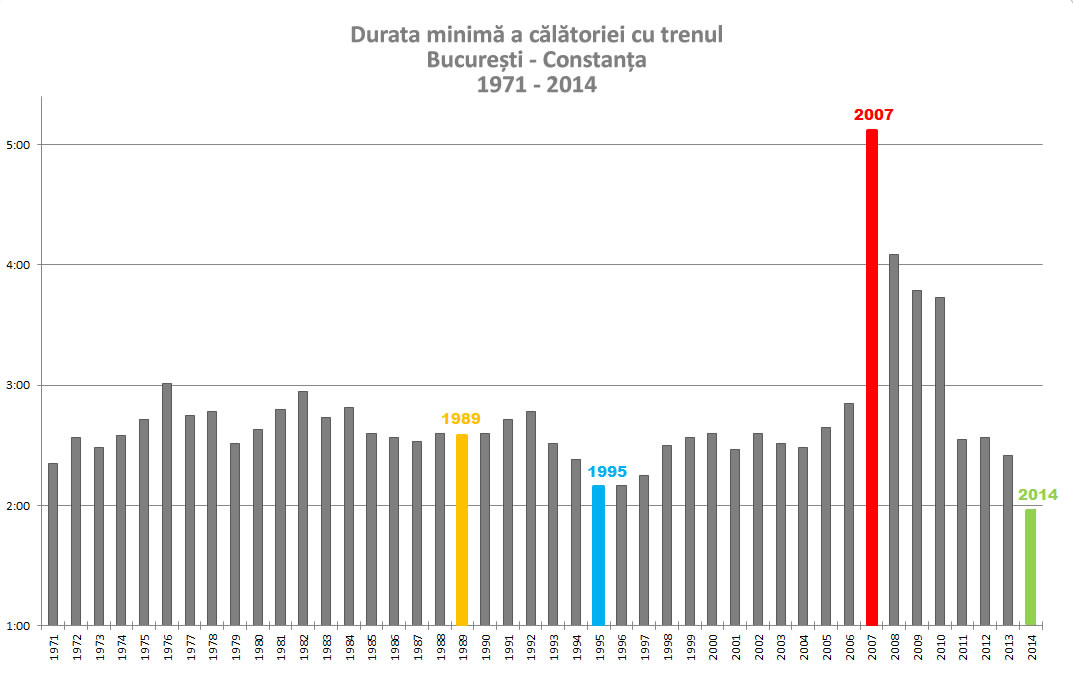Translation of heading above: “”Minimum Duration of the Train Journey” for each year, in hours.
By Leroy W. Demery, Jr.
In the last few years, Romania has outdone the United States on implementing “near high-speed rail” on one of its major intercity passenger rail routes from Constana to Bucharest. Romania has managed to implement good service spending a fraction of the capital poured into the Northeast Corridor, for example.
Here are links to recent Constanta-Bucharest videos:
Run-by (brief): https://www.youtube.com/watch?v=K4Gphwj0UMo
Ground-level run-bys (brief): https://www.youtube.com/watch?v=jgrsDQ4dJh4
Cab ride (20 min): https://www.youtube.com/watch?v=fsMVV7mkP0s
The official name of this trunk line is “Magistrala CFR 800” (Line 800), which covers a distance of 224.8 km (139.7 miles.) The previous maximum permitted speed was 120 km/h / 75 mph. The previous “fastest” travel time was a bit less than 2 h 30 min (see attached chart).
The “new” maximum permitted speed is 160 km/h / 99 mph (the cars have a designed maximum of 200 km/h / 124 mph). The fastest trains make the trip in just under 2 h, which implies a commercial speed of 112 km/h / 70 mph. I should note that arrivals 15 – 20 min ahead of schedule do occur – I experienced this riding trains in both directions. 160 km/h is the EU “upper limit” for conventional rail.
As far as the author knows, there is no significant city pair in California – or anywhere in the US – where Amtrak manages a commercial speed of 70 mph. This makes one wonder what the market share would be if the Pacific Surfliners managed a commercial speed of 70 mph between, say, LA and San Diego?
A common Japanese rail metric is the ratio between fastest commercial speed and maximum permitted speed. So, for Line 800, this ratio would be 112/160 = 70 percent. In contrast, some Shinkansen lines have a speed ratio of 90 percent.)
Upgrading the Magistrala 800 route cost 665 million euros at the start of construction, or 2.9 million euros / km. The final cost was about 913 million euros, or 4 million / km. A Romanian news article quoted some “expert(s)” as saying that this was more than an entirely new line would have cost the author highly doubts that…).
Construction delays were a major factor in the cost escalation of the route. Construction began in 2006; completion was anticipated by 2008 at that time. However, construction wasn’t completed until 2014. Note the long delays suggested by the chart above.
